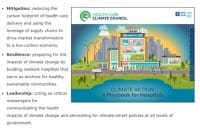Innovation is important in maintaining an open-minded perspective on the frontline of healthcare, particularly in the middle of the COVID-19 pandemic. As a practicing ICU nurse, I know that creativity is an important skill in finding new ways to develop fresh solutions. But innovation may suffer as nurses and other healthcare professionals face the ongoing burden of the pandemic.
Emotionally drained
During the pandemic, nurses have been heralded as heroes and angels, but the work is leaving us exhausted and emotionally drained. In this new wave of the virus, creative solutions have dwindled and employee morale is low. Many healthcare members are struggling daily to cope with the influx of patients, low-staffing, and lack of resources. This pandemic continues to challenge an already insufficient healthcare system.
News stations have highlighted the severity of the pandemic, but although much of the public continues to express empathy, public contributions to control the virus have been met with resistance. It’s no wonder that so many healthcare providers are struggling to stay optimistic, even as a public vaccine is approaching.
Collaborative healthcare efforts have been necessary for providing excellent care; interprofessional teams have needed to lean on one another emotionally and professionally in times of deep distress and uncertainty. Intraprofessional collaboration is essential in executing new ideas. But as professionals become so exhausted with their daily work, it’s hard to brainstorm additional patient treatment options. The public can’t fathom the despair and defeat frontliners face daily. Many health professionals are wondering how many of the community, our colleagues, and our loved ones must fall ill for community measures to be taken seriously. How many body bags must a nurse zip up?
Healthcare leaders have encouraged the public to use infectious disease prevention tools to decrease the spread of COVID-19 and lessen the burden of frontline healthcare workers. Unfortunately, pleas to social media for mask mandates and social distancing have created division and anger nationwide. Many people point to our dead colleagues as the reason why they believe generalized mask use is ineffective, but failing to understand that we are exposed to much higher viral loads than the public. We’re taking serious risks when we step onto our units. Negative pressure rooms are highly desired in these circumstances, but woefully, many hospitals aren’t equipped with enough rooms to meet the demands of COVID-19.
Indisputably, the unanswered solution to containing this virus requires an altruistic and multifaceted approach. This approach has been largely embraced by healthcare communities. Unfortunately, some members continue to give false guidance to the public, which only perpetuates the endless battle that burdens frontline workers. No words can adequately describe the isolation critical care warriors are experiencing—multiple months of isolation have strained our heart strings.
Many of us are giving ourselves pep talks in the hospital parking lots. Call-ins, no shows, and talk of early retirements are increasing among us. Proper safety measures are taken to ensure re-sterilized masks have been donned and will remain there until shift’s end. Many of us can’t remember what it was like to feel the warm embrace of someone else’s cheek upon ours. We are rocking our messy hair under our scrub caps and our skin breakdown with freshly secured bandaids under our masks. We know the consequences of “taking a breather”, because we’ve coded many of our own staff at this point. There is a sense of disenchantment. Occasional laughter and venting ensues to keep our mental health intact.
Our own mental health is suffering in silence. While community members were hosting barbeques over the summer, frontline workers stayed isolated and slept separately from our own loved ones. We did this so we could be available for others’ loved ones. We’re now in the scenario we warned the public about in the first wave of the pandemic. The winter months have proved to be the misfortune we had hoped to avoid. Somehow we are finding the strength to continue to keep coming back to carry the torch, but many of us feel the heavy weight of the world. We are disheartened with the work, but we know our communities need compassion. We love our patients, colleagues, families, and friends. This is why we are still here fighting.
Nursing has been acclaimed as the most trusted and loved profession for years, and yet many are left feeling publicly and professionally disrespected as this year comes to a close. 2020 was designated the “Year of the Nurse”, but too many members of the general public have not recognized our sacrifices by making meaningful behavioral changes to curb the virus.
New perspectives
Months of dealing with the pandemic have brought about new practices that are no longer foreign to ICU staff. Discussion here includes practices being used to make treating patients easier, observations being made about the effects of the disease, and how nurses on the frontlines are struggling.
Some of the practices being used include modified placement of I.V. lines, early proning, and complications. I.V. lines are connected outside of patient rooms to limit staff room exposure times patients with COVID-19. Early proning can make the difference between a patient being placed on a ventilator, or being able to sustain life by using non-invasive oxygenation ventilation. Although much needed at times, many practicing clinicians can attest to survival rates decreasing when patients with COVID-19 are placed on a ventilator.
The complications of COVID-19 are many, with severe disease impacting all organs. Surviving the infection can leave one severely altered; therefore, it’s important to monitor any potential deficits. We have seen serious complications such as disseminated intravascular coagulation and amputations of fingers and toes (because of necrosis caused by altered circulation in the capillaries).
Blood samples often appear extremely black in those with severe disease; iron toxicity may prove to be a major culprit in negative outcomes of the disease. Continuous renal replacement therapy has shown some success in removing iron. Could an adjunct treatment using an iron-chelating agent drug be investigated and administered to bind the patient’s iron levels and decrease the viral mobility? Sars-CoV-2 infects host cells and needs iron to replicate, so we need researchers to study this anomaly. Have we grown so accustomed and tired of caring for the ill that we have lost sight of thought provoking innovation in our treatment methods? Many patients report tasting iron, or developing a loss of sense of smell and taste with this virus.
Additionally, early administration of convalescent protein plasma may effectively provide antibodies to help the patient fight off the virus. However, if this treatment is administered when a patient’s body is struggling with a high viral load, a provocation of cytokine storm reaction may become unavoidable.
The issues addressed here are only a bare minimum of the obstacles faced by all of us serving on the frontline. We’re struggling to obtain new methods to treat this particular population, but wonder if our ideas will be heard by other healthcare professionals, who are simply trying to muddle through day to day. The stress is wearing on our ability to innovate and explore other options; we are wrapped up in the frustration of grief and anger as we struggle on the frontlines of the continuing COVID-19 surge.
Cherron Taylor is a critical care nurse in Oklahoma.



















2 Comments.
Thanks Margie;)
Thanks for making the effects of COVID-19 on nursing plain and simple! So many in the public keep saying, “You’re nurses. You signed up for this, so stop whining and get your job done.”
You did a super job!